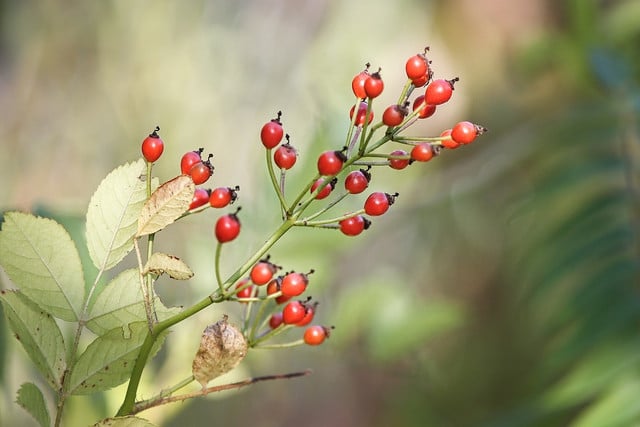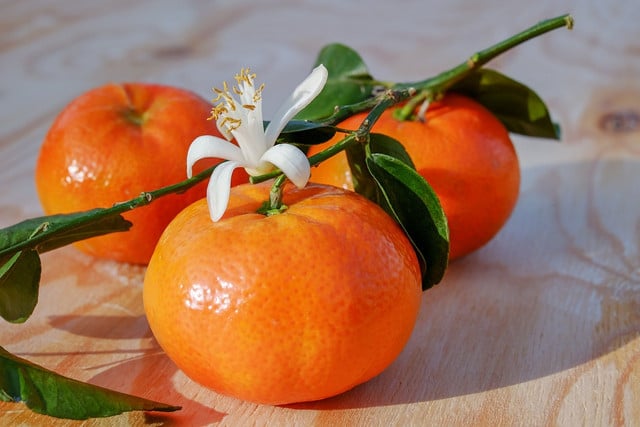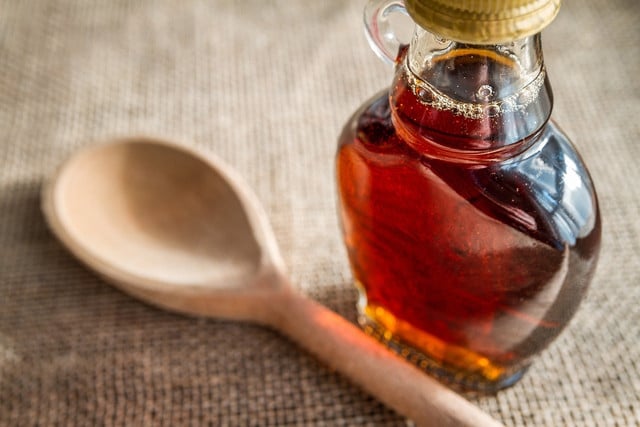Rose hip syrup helped fight vitamin deficiency during World War II, but what is it? Here is all the info and a rose hip syrup recipe to get your immune system singing.
During World War II, a scarcity of Vitamin C prompted many people to search for alternative sources of nutrition. As an essential nutrient for maintaining a healthy immune system (and evading scurvy), Vitamin C found a worthy contender in the abundantly growing rose hips. These versatile gems can be cultivated and used in many forms, including jams, wine, tea and rose hip syrup.
One thing to avoid when dealing with rose hips is consuming them whole and raw, as they contain a hairy seed core that must be removed before consumption.
Their proven benefits throughout modern history explain why we shouldn’t overlook this natural medicine. Here’s our tantalizing, easy-to-make rose hip syrup recipe — use it to fight off colds and flu or just to give your immune system a helping hand.
What Are Rose Hips?

(Foto: CC0 / Pixabay / manfredrichter)
Rose hips are — as their name suggests — connected to the rose plant. Left alone, they develop into flowers. These small, round fruits often display a vibrant orange or red color. They grow on rose bushes and rose trees and may appear to have wisps of foliage at the bottom edge.
Rose hips can be seen everywhere, from woods to parks and at the side of roads. The juiciest rose hips are found on Rosa rugosa (or rock roses). These are also common close to water sources, so keep your eyes open when you’re foraging. Look for soft, slightly wrinkled, brightly colored rose hips — the best specimens for your rose hip syrup recipe.
Rose Hip Syrup and the Second World War



(Foto: CC0 / Pixabay / Couleur)
During World War II, it was hard to source imported citrus fruits, making it difficult to get enough Vitamin C. This was a time when people needed to worry about developing scurvy due to diets with limited nutrition.
Rose hips, which contain the most Vitamin C of any fruit or vegetable, were an excellent replacement for citrus fruits. They also contain bioflavonoids, which boost Vitamin C’s effectiveness. As rose hips also contain other vitamins and anti-inflammatory compounds, this wartime rose hip syrup recipe soon caught on.
In fact, the UK’s Ministry of Food even recommended a daily dose of rose hip syrup, or one spoonful a day, to maintain health. Eventually, it was made in batches by organizations like the Scouts (children were paid to collect them) and the UK Women’s Institute. Thousands of bottles of rose hip syrup were made and distributed, readily available in stores.
Rose Hip Syrup Recipe



(Foto: CC0 / Pixabay / piviso)
Welcome to the world of natural immune boosters! Here is how to make this tried-and-tested rose hip syrup recipe. You can scale up the ingredient measurements however you like to get a higher yield. Before you start, gather a sharp knife or food processor, some muslin cloth or a coffee filter, a small pot and a medium-sized bowl.
Ingredients:
- 1 cup rose hips
- 2 cups water
- Brown sugar — as many grams of sugar as there are millimeters of liquid in Step 12
Instructions:
- Remove any leaves and stalks.
- Coarsely chop the rose hips, or chop them in a food processor.
- Bring the water to a boil and add the rose hips.
- Set the pan aside for half an hour to let the water and rose hips infuse.
- Strain the solids from the liquid, keeping the infused water. Repeat this process twice.
- Add the rose hips back to the pan and cover with more boiling water.
- Set aside once again to infuse further.
- Strain and add the second batch of infused water to the first.
- Discard the pulp/rose hips.
- Bring the liquid back to a boil, then lower to a simmer and keep it on the heat until it reduces by around half.
- Remove from the heat and add as many grams of sugar as there are millimeters of liquid.
- Boil for an additional 5 minutes, occasionally stirring to make sure the sugar is dissolved.
Once your rose hip syrup recipe is the desired consistency, let it cool before transferring to an airtight container and storing it in the fridge. This is a great use for mason jars. Just be sure to sterilize your jars first — the sterilization process is the same as for canning.
More Rose Hip Ideas



(Foto: CC0 / Pixabay / Peggychoucair)
And there you have your simple and immune-boosting rose hip syrup recipe. If you have a lot of rose hips and need ideas for what else to do with them, consider the benefits of making rose hip tea, or drying rose hips to ensure nothing goes to waste.
You can also drizzle this rose hip syrup recipe on pancakes (these cast iron pancakes are a great match) and waffles or add it to some delicious summer spritz cocktails for an extra punch of flavor.
Read more:
- How to Freeze Dry Fruit Without a Machine: Step-by-Step
- Is Garnier Truly Cruelty-free and Eco-friendly? Myths and Facts
- Juneberry: Find and Identify the Native Berry (+ Jam Recipe)
Do you like this post?








